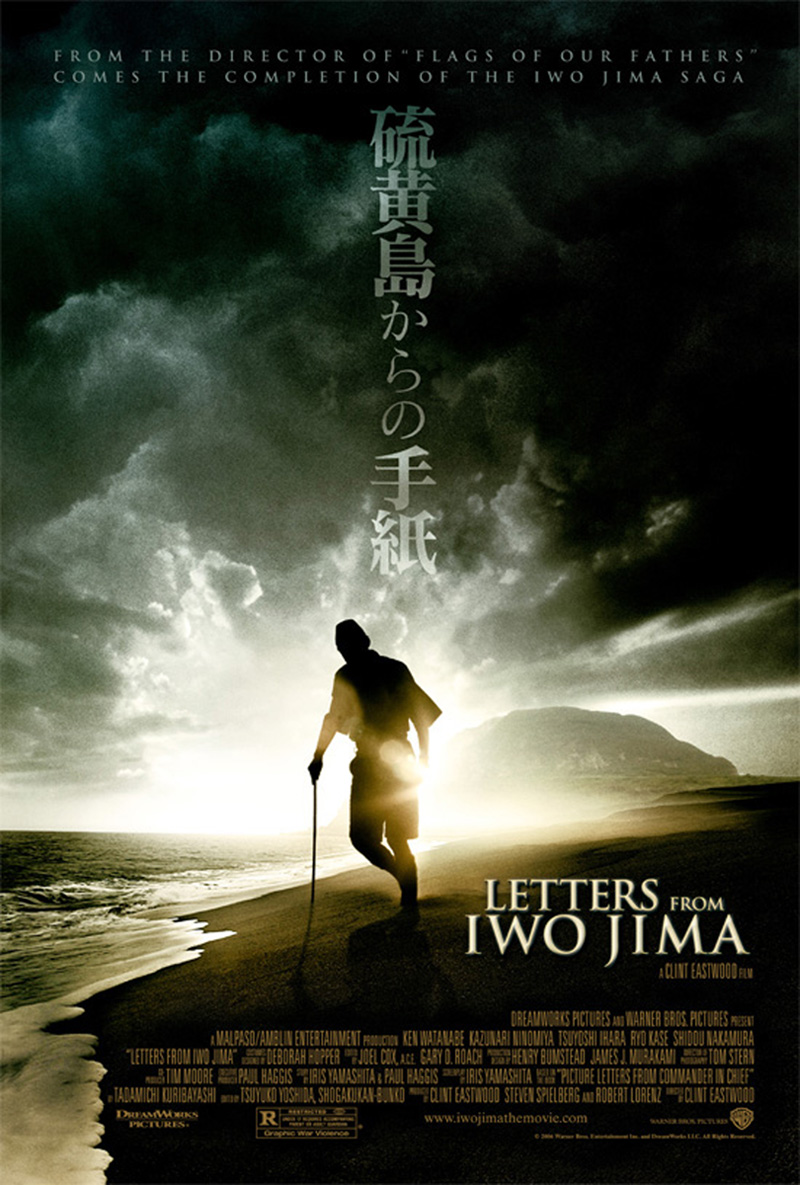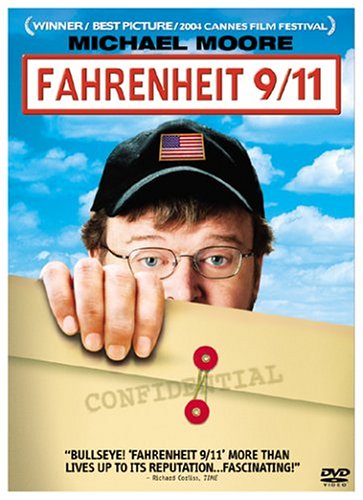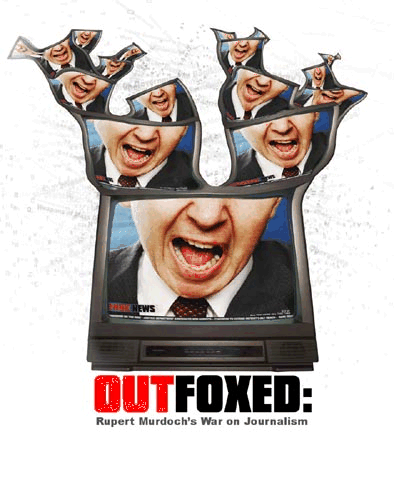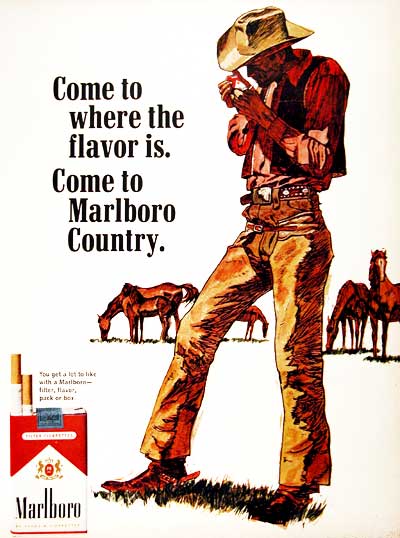The following was commissioned for and included in the 17th edition of the Time Out Film Guide, (2008), and is being reprinted with the publisher’s permission. Thanks also to John Pym, the book’s editor, who proposed that I write this piece so that it would come out before the Presidential election. –J.R.
BUSHWHACKED CINEMA
by Jonathan Rosenbaum
When the history of American movies during the eight-year reign of George W. Bush (2001-2009) eventually comes to be written, one might hypothesize that the commercial development of the mobile phone during the 1980s and 1990s and the introduction of the iPod during the first year Bush took office were crucial in setting the stage for some of the basic conditions of that era. Arguably for the first time, one could easily sustain one’s ignorance about and indifference to one’s fellow citizens even while sharing the same public space with them–on the street or in other public locations dedicated to some form of transport: terminals, buses, subways, trains, planes, fairgrounds, theme parks, and, above all, cinemas.
So the phenomenon of a U.S. President who, to all appearances, preferred to remain blissfully (and strategically) ignorant about the news and the overall state of the world, and ran his office accordingly, was part and parcel of this growing trend to eliminate the public sphere from American life and subdivide the entire culture and society into `special interest’ groups and niche markets. Not that the news itself as it was reported in the U.S. was necessarily indicative of what was happening. In the freedom-of-the-press rankings done annually for 169 countries by Reporters Without Borders, the U.S. plunged from 17th place in 2002 to 53rd in 2006, with only a minor upswing to 48th place in 2007. (By contrast, the U.K. fluctuated between 21st and 28th place over the same period, with the Scandinavian countries, Ireland, and Canada leading all the others.)
During the same period, mainstream moviegoing continued its gradual shift from being a community activity, which it was during roughly the first half of the 20th century, to being for the most part either a public activity for teenagers and preteens or a private activity conducted in homes. Yet at the same time, outspoken films critiquing the U.S. occupation of Iraq and Afghanistan–popularly known as “the war in Iraq and Afghanistan”—-began to proliferate. Some of these were documentaries such as Iraq in Fragments, The War Tapes, The Torture Question, and Gunner Palace, which, like Michael Moore’s Fahrenheit 9/11, performed the essential task of reporting basic information that the U.S. news had mainly failed to report. Some fiction films, such as Paul Haggis’s In the Valley of Elah (which featured arguably better and more detailed work by both cinematographer Roger Deakins and actor Tommy Lee Jones than the more Oscar-friendly and apolitical No County for Old Men), mainly decried the devastating effect that the horrors of the occupation was having on American servicemen; a few others, notably Brian De Palma’s Redacted (which borrowed a page or two from his 1989 Casualties of War), protested the inhuman treatment of innocent local citizens. There were still other important features that dealt with the occupations indirectly—-perhaps most notably Clint Eastwood’s memorable diptych Flags of Our Fathers and Letters from Iowa Jima, which arguably wouldn’t have materialized when they did if there hadn’t been a pressing need to rethink some of the basic postulates regarding American idealism in relation to warfare.
With the striking exception of two 2004 documentaries–Fahrenheit 9/11, the most successful documentary in film history, and Robert Greenwald’s Outfoxed: Rupert Murdoch’s War on Journalism, which briefly (and miraculously) became the top-selling DVD on Amazon without a single theatrical showing–few of these films fared especially well at the box office. But this shouldn’t minimize their impact: sometimes the quality of the viewers and the viewing counts more than the quantity, especially when changes of public awareness are at stake. And all this protest filmmaking was in dramatic contrast to the meager cinematic response to the comparably controversial war of the U.S. against North Vietnam between 1959 and 1975. The latter mostly yielded one mainstream flagwaver (John Wayne’s 1968 The Green Berets), a few marginalized protest documentaries (such as In the Year of the Pig and Winter Soldier), followed by the Oscar-winning Hearts and Minds just before the war’s end, and then several after-the-fact blockbusters, such as The Deer Hunter, Apocalypse Now, and Platoon.
Meanwhile, certain kinds of niche markets in videos and DVDs began to form new sorts of film communities. Most of these were structured not around common viewing situations but around the same films being viewed and then discussed on the Internet via web sites, blogs, and chatgroups. One important exception to this tendency, suggesting a new form of cine-club, was the sponsoring by Moveon.org of countless home screenings across the U.S. of a few documentaries by Robert Greenwald, one of them the already-mentioned Outfoxed. (Others have included Unprecedented: The 2000 Presidential Election, Uncovered: The Whole Truth About the Iraq War, Unconstitutional, and Wal-Mart: The High Cost of Low Price).
The extraordinary success of Moveon–a family of leftist organizations boasting a 3.2 million membership and an uncanny ability to raise money and help galvanize public opinion in a hurry, started only a decade ago—-largely stemmed from the way it worked almost exclusively through the Internet, even though it specialized in organizing local activities through email and online appeals and resources. This has provided a potential model for organizing certain niche markets in cinephilia, though so far the only widespread success of this trend has been in the political realm. To a few hardy and aggressive cinephiles, it has suggested other utopian possibilities involving art films, experimental films, and revivals that have only begun to be tested, in the U.S. and elsewhere.
What has made such radical regroupings seem especially enticing has been the growing alienation of much of the film audience from public cinemas, as well as the growing suspicion that the future of cinema may lie elsewhere—-a development paralleled in some respects by the growing public disaffection with George W. Bush. Despite the attentiveness to polls shared by the White House and the Hollywood studios, it seems that the remoteness of both from the people they service can readily be perpetuated as long as the right kind of spin is there to inflect the discourse. Indeed, it appears that some time after the film industry discovered that audiences didn’t necessarily have to like a movie for it to do well at the box office (so long as millions were spent on publicity and monopolizing the marketplace–which became easier once Ronald Reagan stopped enforcing the antitrust laws in the 1980s), Bush’s own team was offhandedly letting the citizenry know that whether or not they supported the U.S. occupation of Iraq and/or Afghanistan had little to do with whether or not it would continue.
It’s clearly much easier to launch military invasions than to curtail them. One way that both so-called “Gulf Wars” in 1990 and in 2003 were easily sold to the public was by marketing them as if they were movies and movie spinoffs–a trend especially evident in cable news logos and their accompanying musical themes during both periods. (It could even be argued that the voice of James Earl Jones on CNN served in part to evoke its earlier employments in Star Wars—-perhaps the first major media demonstration that massive warfare could be celebrated more guiltlessly if it were shown from a cosmic distance, without blood, as if it were a video game.) As was pointed out in the Preface of Larry Tye’s The Father of Spin: Edward L Bernays & The Birth of Public Relations (New York: Crown Publishers, 1998), the “public relations triumph” that was the “selling of America on the Persian Gulf War…was crafted by one of America’s biggest public relations firms, Hill and Knowlton, in a campaign bought and paid for by rich Kuwaitis who were Saddam’s archenemies”. And the syntactical confusion created after the September 11 attacks by such terms as “The Global War on Terrorism” or “War on Terror”—-implying that a “war” can have a beginning but not a foreseeable end–clearly helped to keep the business of such an enterprise afloat in a state of semi-permanence. Thus the second “Gulf War” was packaged not simply as a sequel to the first but as an ongoing TV series designed to last indefinitely, or at least as long as it kept turning a handsome enough profit for the new wave of merchandisers.
The September 11 attacks, commemorated in such movies as Paul Greengrass’ United 93 and Oliver Stone’s WorldTradeCenter, offered the U.S. the unique possibility of joining the remainder of the planet in terms of shock and suffering, opening the way towards a greater global awareness. That Bush Jr. chose to steer the populace in the reverse direction has had many lamentable consequences, including a redefinition of “America” in terms of both exclusivity and empire. If the terrorist attacks were an “American” tragedy, this implied both that the terrorists were allowed to set the terms of the debate and that the citizens of 86 other countries who died in the destruction of the WorldTradeCenter didn’t count. A similar privileging of U.S. casualties over others in the occupations of Iraq and Afghanistan tended to make the claims of altruistic motives sound even hollower.
***
It’s an interesting exercise to try to sum up the personalities and predilections of various U.S. Presidents according to their tastes in movies. Dwight D. Eisenhower (1953-61) was a particular fan of High Noon (and westerns in general) while John F. Kennedy (1961-63) displayed special affection for Spartacus and The Manchurian Candidate (the latter climaxing in a political assassination that creepily anticipated his own, which later prompted its star and Kennedy’s former chum Frank Sinatra to remove it from circulation for several years). In the Guardian, Julian Borger reported that Lyndon B. Johnson (1963-69) ‘had one favourite movie and he watched it more than a dozen times, sometimes on consecutive nights. It was a 10-minute homage to himself, sonorously narrated by Gregory Peck and made on the orders of the White House staff to introduce the new president to a sceptical public after Kennedy’s assassination..’ The reported favourite of Richard M. Nixon (1969-74) was Patton, seen the same week in 1970 that he ordered the secret war in Cambodia.
I’ve been unable to discover the movie preferences of either Gerald Ford (1974-77) or the first George Bush (1989-93), but it’s worth noting that Jimmy Carter (1977-81) saw more movies during his four years in office than Ronald Reagan (1981-89) saw in eight—-and more, indeed, than any other President before or since. (I suspect Reagan tended to shy away from films because they reminded him too much of what he associated with work-—although apparently he and Nancy had a particular affection for James Stewart movies.)Bill Clinton (1993-2001) has expressed enthusiasm for American Beauty, Fight Club, Schindler’s List, and Three Kings. And George W. Bush’s movie interests, insofar as he has any, appear to be Austin Powers comedies, a few war films (We Were Soldiers, Saving Private Ryan, and Black Hawk Down, his favorite), and the Afghan film Osama—-the latter of which was apparently viewed for information rather than entertainment. Black Hawk Down, incidentally, was also distributed by Saddam Hussein to his own troops for comparable reasons–supposedly for its insights into how to defeat American soldiers.
More generally, one could perhaps single out the younger Bush as the first and only U.S. President to date to have expressed no interest of any kind in any of the arts, cinema included. (Even Nixon, by way of contrast, saw fit to pay tribute to John Ford.) But if one could reduce the Bushwhacked years to a couple of movie paradigms, these might be Marlboro cigarette commercials and the Austin Powers comedy-thrillers—-both nostalgic evocations of the American empire as perceived from the vantage point of the Cold War, roughly half a century earlier. The Marlboro commercial showed the Texan surveying his endless range as the purveyor of visionary machismo and manifest destiny, in strictly serious terms. Austin Powers, on the other hand, suggests good-natured self-mockery, coming much closer to the Bush many Americans presumably thought they voted for—-the one they allegedly wanted to have a beer with.
***
Not having seen Saw (2004) or any of its three sequels, all of which featured torture as their main attraction, I can’t pinpoint precisely what connects them to the torture of prisoners in Abu Ghraib and Guantanamo, which came to public light the same year that the series started. But the fact that the films’ popularity peaked with its first sequel in 2005 (Saw II grossed $87 million domestically), the year after the infamous photographs of Abu Ghraib prisoner abuse first appeared online, does strongly suggest a connection. Those images quickly entered the public imagination, and Hollywood was waiting to exploit them.
Given that the overwhelming majority of Iraqi citizens sent to Abu Ghraib have never been convicted of any crime, and that expert advice tends to confirm that any information acquired from even guilty prisoners as a result of torturing them tends to be useless—-precisely because people under this kind of pressure are apt to say anything, especially whatever they think the torturers want them to say—-raises the question of why Bush has been willing to break treaties and other international agreements and tarnish American prestige simply for the sake of inflicting needless cruelty. The only plausible explanation I’ve come up with for this is that expert opinion on this subject, like the prediction or prospect of $4-a-gallon gasoline, hasn’t yet reached the Oval office, apparently because second opinions of any kind aren’t being sought.
Given the cultural remoteness of most Americans from the everyday lives and fates of innocent Iraqi citizens, it’s hard to shake off the suspicion that Bush’s indefensible position on this subject may be typical rather than eccentric—-that a good many Americans may not really mind if innocent Iraqis undergo torture, just as long as the facts of such injustices aren’t shoved in their faces. Given the overall willingness of the American press to accommodate this desire for avoiding the facts, the process by which torture becomes a box office staple may indeed not be too difficult to understand. After all, it’s been demonstrated repeatedly by the TV series 24–launched around the same time that Bush became President and still popular today–that government-sanctioned torture continues to be dramaturgically sound and therefore saleable even if it remains questionable on practical as well as ethical grounds.
This may help to account for how Mel Gibson’s The Passion of the Christ, in Aramaic, Latin, and Hebrew with English subtitles, managed to come in third among the top-grossing releases of 2004, just behind Shrek 2 and Spider-Man 2 and ahead of Meet the Fockers and The Incredibles—-how, in short, the only feature among the top ten not made chiefly for kids and teenagers offered a veritable orgy of cruelty and suffering, complete with slow motion and masochistic point-of-view shots. Despite the title, I assumed this drama about the last 12 hours of Jesus’s life would include something about his teachings, at least in flashback. But the Sermon on the Mount was reduced to two sound bites, and miracles and good works barely got a glance. The charges of anti-Semitism and homophobia hurled at the movie seemed too narrow; its general disgust for humanity was so unrelenting that the military-sounding drums at the end seemed to be welcoming the apocalypse (rather like the mass slaughter following the Mexican rebel’s torture in The Wild Bunch).
According to the trade magazine Boxoffice, on 30 March 2008, The Passion of the Christ in fact placed 11th in its list of “all-time domestic blockbusters,” on the heels of (in descending order) Titanic (1997), Star Wars (1977), Shrek 2 (2004), E.T.: The Extra-Terrestial (1982), Star Wars, Episode I: The Phantom Menace (1999) Pirates of the Caribbean: Dead Man’s Chest (2006), Spider-Man (2002), Star Wars, Episode III: Revenge of the Sith (2005), Lord of the Rings: The Return of the King (2003), and Spider-Man 2 (2004). It’s a sobering thought that six of these came out during Bush’s eight years and the only other films on the list that didn’t qualify as fodder for kids were made during previous decades. But this infantilism can be ascribed to the preferences of the film industry as much as those of the audience, and this audience was plainly as Bushwhacked as the movies it attended. In more ways than one, its mind was elsewhere.









